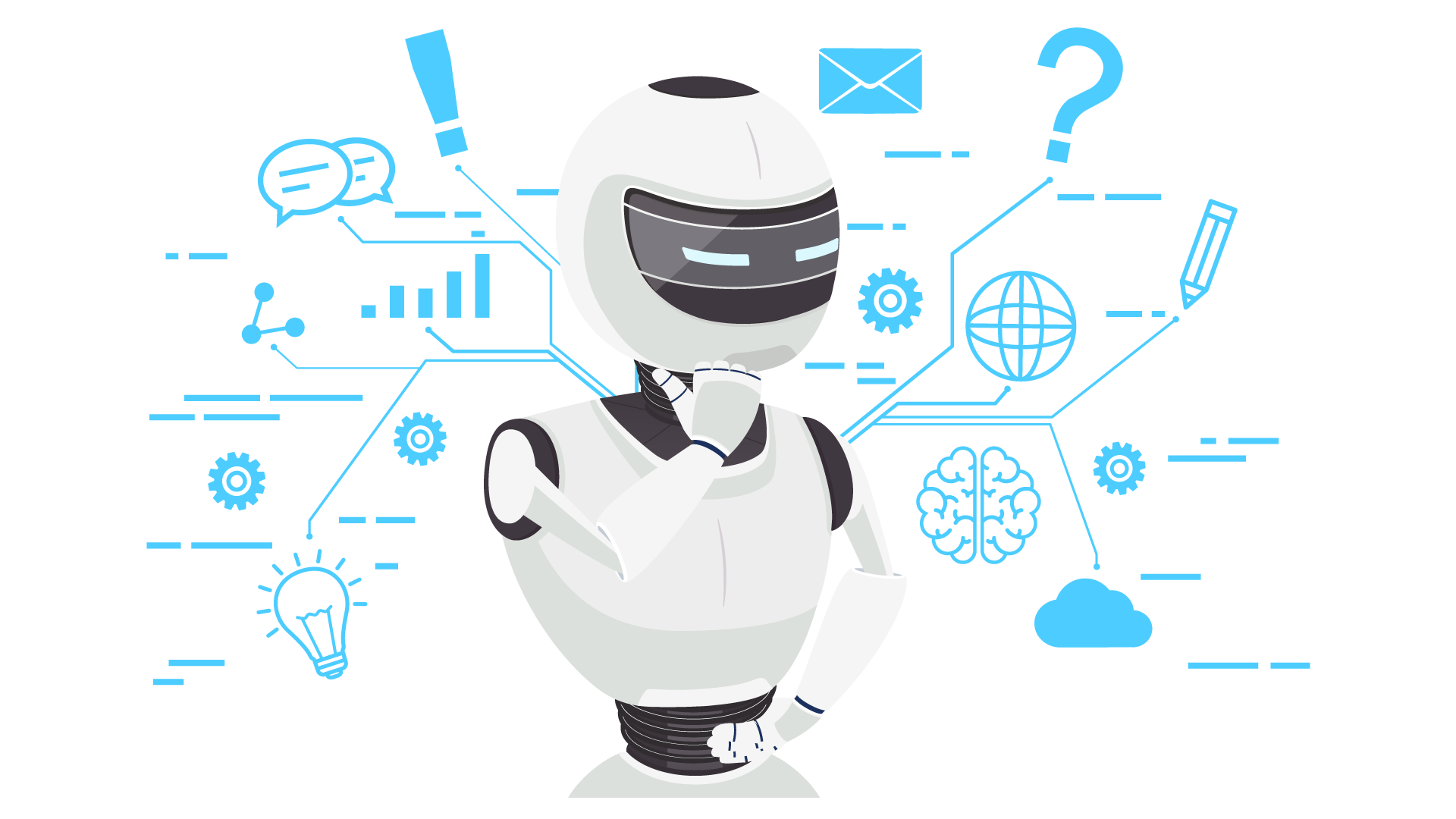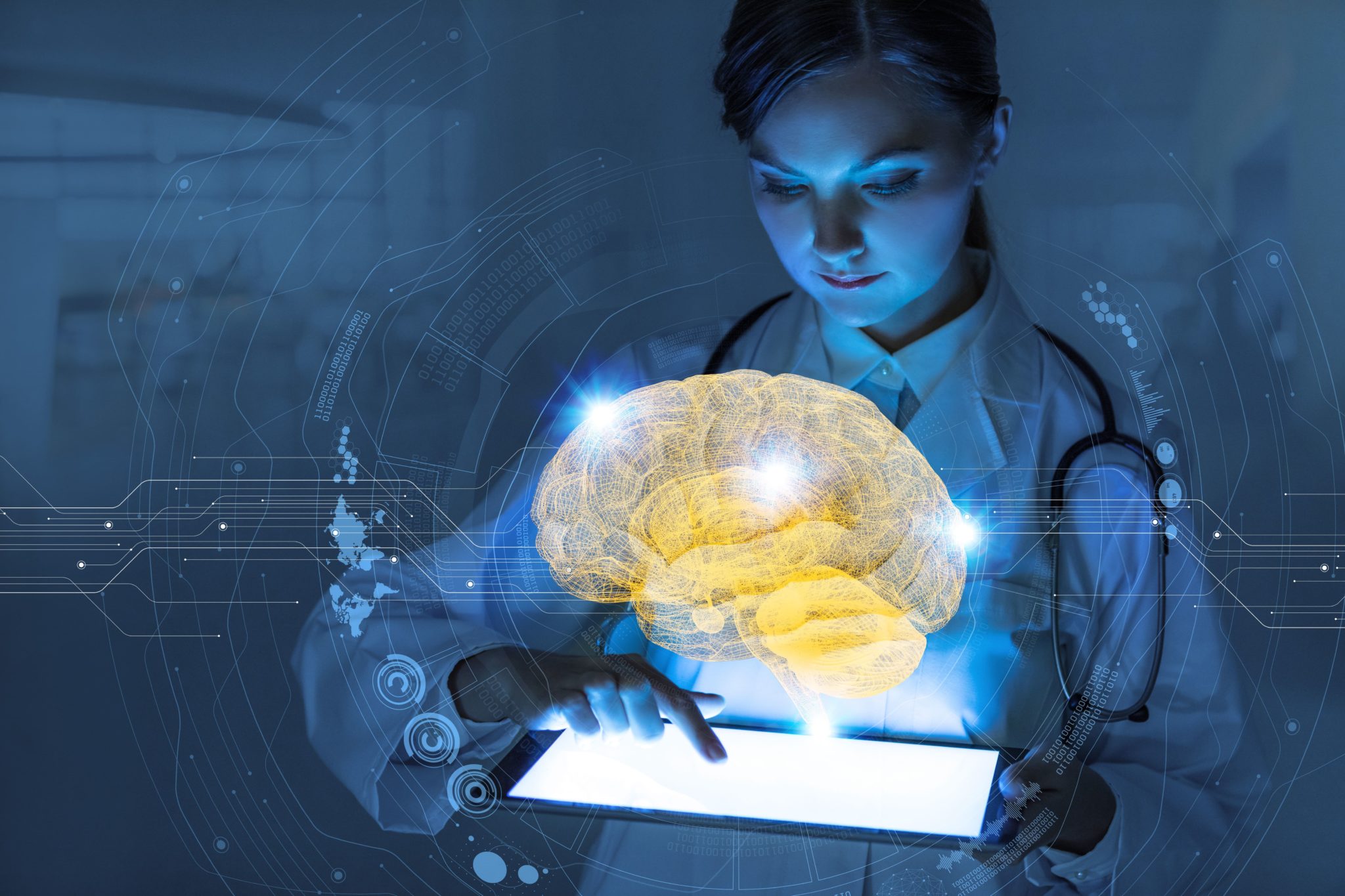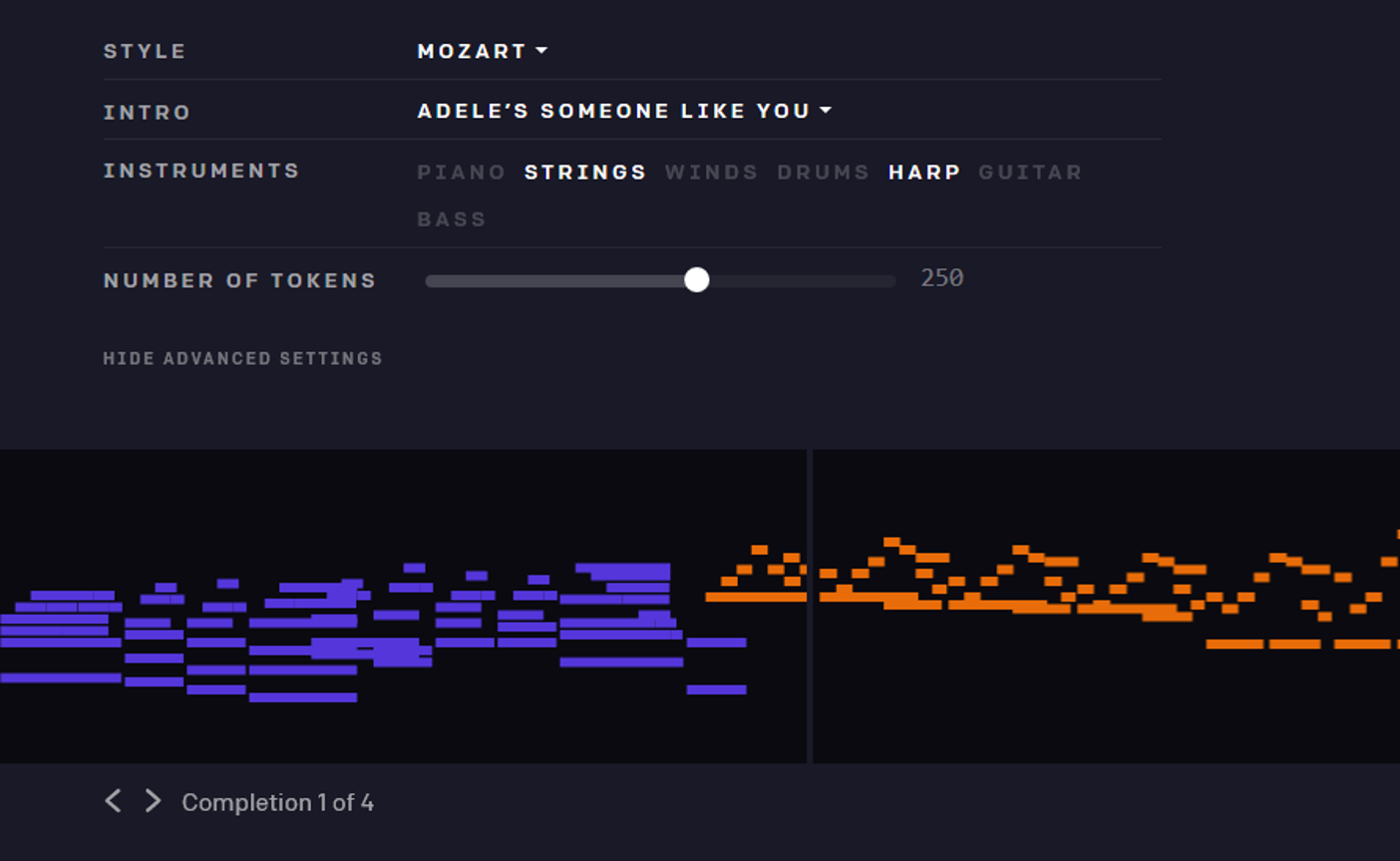Top 10 Real-World Artificial Intelligence Applications
Explore the top ten real-world AI applications and the various fields these applications have impacted.
Join the DZone community and get the full member experience.
Join For Free
Just the mention of AI and the brain invokes pictures of Terminator machines destroying the world. Thankfully, the present picture is significantly more positive. So, let’s explore how AI is helping our planet and at last benefiting humankind. In this blog on Artificial Intelligence applications, I’ll be discussing how AI has impacted various fields like healthcare, finance, agriculture, and so on.
Marketing
Marketing is a way to sugar coat your products to attract more customers. We humans are pretty good at sugar coating, but what if an algorithm or a bot is built solely for the purpose of marketing a brand or a company? It would do a pretty awesome job!
In the early 2000s, if we searched an online store to find a product without knowing it’s exact name, it would become a nightmare to find the product. But now when we search for an item on any e-commerce store, we get all possible results related to the item. It’s like these search engines read our minds! In a matter of seconds, we get a list of all relevant items. An example of this is finding the right movies on Netflix.

One reason why we’re all obsessed with Netflix is that it provides highly accurate predictive technology based on customer’s reactions to films. It examines millions of records to suggest shows and films that you might like based on your previous actions and choices of films. As the data set grows, the technology gets smarter and smarter every day.
With the growing advancement in AI, it may be possible in the near future for consumers on the web to buy products by snapping a photo of it. Companies like CamFind and their competitors are experimenting with this already.
Banking
AI in banking is growing faster than you think! A lot of banks have already adopted AI-based systems to provide customer support and detect anomalies and credit card fraud. An example of this is the HDFC Bank.
HDFC Bank has developed an AI-based chatbot called EVA (Electronic Virtual Assistant), built by Bengaluru-based Senseforth AI Research.
Since its launch, Eva has addressed over 3 million customer queries, interacted with over half a million unique users, and held over a million conversations. Eva can collect knowledge from thousands of sources and provide simple answers in less than 0.4 seconds.

The use of AI for fraud prevention is not a new concept. In fact, AI solutions can be used to enhance security across a number of business sectors, including retail and finance.
By tracing card usage and endpoint access, security specialists are more effectively preventing fraud. Organizations rely on AI to trace those steps by analyzing the behaviors of transactions.
Companies such as MasterCard and RBS WorldPay have relied on AI and deep learning to detect fraudulent transaction patterns and prevent card fraud for years now. This has saved millions of dollars.
Finance
Ventures have been relying on computers and data scientists to determine future patterns in the market. Trading mainly depends on the ability to predict the future accurately.
Machines are great at this because they can crunch a huge amount of data in a short span. Machines can also learn to observe patterns in past data and predict how these patterns might repeat in the future.
In the age of ultra-high-frequency trading, financial organizations are turning to AI to improve their stock trading performance and boost profit.

One such organization is Japan’s leading brokerage house, Nomura Securities. The company has been reluctantly pursuing one goal, i.e. to analyze the insights of experienced stock traders with the help of computers. After years of research, Nomura is set to introduce a new stock trading system.
The new system stores a vast amount of price and trading data in its computer. By tapping into this reservoir of information, it will make assessments. For example, it may determine that current market conditions are similar to the conditions two weeks ago and predict how share prices will be changing a few minutes down the line. This will help to take better trading decisions based on the predicted market prices.
Agriculture
Here’s an alarming fact, the world will need to produce 50 percent more food by 2050 because we’re literally eating up everything! The only way this can be possible is if we use our resources more carefully. With that being said, AI can help farmers get more from the land while using resources more sustainably.
Issues such as climate change, population growth, and food security concerns have pushed the industry into seeking more innovative approaches to improve crop yield.
Organizations are using automation and robotics to help farmers find more efficient ways to protect their crops from weeds.

Blue River Technology has developed a robot called See & Spray, which uses computer vision technologies like object detection to monitor and precisely spray weedicide on cotton plants. Precision spraying can help prevent herbicide resistance.
Apart from this, Berlin-based agricultural tech start-up called PEAT has developed an application called Plantix that identifies potential defects and nutrient deficiencies in the soil through images.
The image recognition app identifies possible defects through images captured by the user’s smartphone camera. Users are then provided with soil restoration techniques, tips, and other possible solutions. The company claims that its software can achieve pattern detection with an estimated accuracy of up to 95%.
Healthcare
When it comes to saving lives, a lot of organizations and medical care centers are relying on AI. There are many examples of how AI in healthcare has helped patients all over the world.
An organization called Cambio Health Care developed a clinical decision support system for stroke prevention that can give the physician a warning when there’s a patient at risk of having a heat stroke.

Another such example is Coala Life, which is a company that has a digitalized device that can find cardiac diseases.
Similarly, Aifloo is developing a system for keeping track of how people are doing in nursing homes, home care, etc. The best thing about AI in healthcare is that you don’t even need to develop a new medication. By using an existing medication in the right way, you can also save lives.
Gaming
Over the past few years, artificial intelligence has become an integral part of the gaming industry. In fact, one of the biggest accomplishments of AI is in the gaming industry.
DeepMind’s AI-based AlphaGo software, which is known for defeating Lee Sedol, the world champion in the game of GO, is considered to be one of the most significant accomplishments in the field of AI.
Shortly after the victory, DeepMind created an advanced version of AlphaGo called AlphaGo Zero, which defeated the predecessor in an AI-AI face off. Unlike the original AlphaGo, which DeepMind trained over time by using a large amount of data and supervision, the advanced system, taught itself to master the game.
Other examples of artificial intelligence in gaming include the First Encounter Assault Recon, popularly known as F.E.A.R, which is a first-person shooter video game.

But what makes this game so special?
The actions taken by the opponent AI are unpredictable because the game is designed in such a way that the opponents are trained throughout the game and never repeat the same mistakes. They get better as the game gets harder. This makes the game very challenging and prompts the players to constantly switch strategies and never sit in the same position.
Space Exploration
Space expeditions and discoveries always require analyzing vast amounts of data. Artificial intelligence and machine learning is the best way to handle and process data on this scale. After rigorous research, astronomers used Artificial Intelligence to sift through years of data obtained by the Kepler telescope in order to identify a distant eight-planet solar system.

Artificial intelligence is also being used for NASA’s next rover mission to Mars, the Mars 2020 Rover. The AEGIS, which is an AI-based Mars rover, is already on the red planet. The rover is responsible for the autonomous targeting of cameras in order to perform investigations on Mars.
Autonomous Vehicles
For the longest time, self-driving cars have been a buzzword in the AI industry. The development of autonomous vehicles will definitely revolutionaries the transport system.
Companies like Waymo conducted several test drives in Phoenix before deploying their first AI-based public ride-hailing service. The AI system collects data from the vehicle's radar, cameras, GPS, and cloud services to produce control signals that operate the vehicle.

Advanced Deep Learning algorithms can accurately predict what objects in the vehicle’s vicinity are likely to do. This makes Waymo cars more effective and safer.
Another famous example of an autonomous vehicle is Tesla’s self-driving car. Artificial Intelligence implements computer vision, image detection and deep learning to build cars that can automatically detect objects and drive around without human intervention.
Elon Musk talks a ton about how AI is implemented in tesla’s self-driving cars and autopilot features. He quoted that,
“Tesla will have fully self-driving cars ready by the end of the year and a “robotaxi” version – one that can ferry passengers without anyone behind the wheel – ready for the streets next year”.
Chatbots
These days, virtual assistants are a very common technology. Almost every household has a virtual assistant that controls their appliances at home. A few examples include Siri, Cortana, and Alexa, which are gaining popularity because of the user experience they provide.
Amazon’s Echo is an example of how artificial intelligence can be used to translate human language into desirable actions. This device uses speech recognition and NLP to perform a wide range of tasks on your command. It can do more than just play your favorite songs. It can be used to control the devices at your house, book cabs, make phone calls, order your favorite food, check the weather conditions, and so on.

Another example is the newly released Google’s virtual assistant called Google Duplex, which has astonished millions of people. Not only can it respond to calls and book appointments for you, but it also adds a human touch.

The device uses Natural language processing and machine learning algorithms to process human language and perform tasks such as manage your schedule, control your smart home, make a reservation, and so on.
Social Media
Ever since social media has become our identity, we’ve been generating an immeasurable amount of data through chats, tweets, posts, and so on. And wherever there is an abundance of data, AI and machine learning are always involved.
In social media platforms like Facebook, AI is used for face verification wherein machine learning and deep learning concepts are used to detect facial features and tag your friends. Deep learning is used to extract every minute detail from an image by using a bunch of deep neural networks. On the other hand, machine learning algorithms are used to design your feed based on your interests.

Another such example is Twitter’s AI, which is being used to identify hate speech and terroristic language in tweets. It makes use of machine learning, deep learning, and natural language processing to filter out offensive content. The company discovered and banned 300,000 terrorist-linked accounts, 95% of which were found by non-human, artificially intelligent machines.
Artificial Creativity
Have you ever wondered what would happen if an artificially intelligent machine tried to create music and art?
An AI-based system called MuseNet can now compose classical music that echoes the classical legends, Bach and Mozart.

MuseNet is a deep neural network that is capable of generating 4-minute musical compositions with 10 different instruments and can combine styles from country to Mozart to the Beatles.
MuseNet was not explicitly programmed with an understanding of music, but instead discovered patterns of harmony, rhythm, and style by learning on its own.
Another creative product of artificial intelligence is a content automation tool called Wordsmith. Wordsmith is a natural language generation platform that can transform your data into insightful narratives.

Tech giants such as Yahoo, Microsoft, Tableau, are using WordSmith to generate around 1.5 billion pieces of content every year.
I’d like to conclude by asking you how you think AI will benefit us in the future?
Further Reading
Opinions expressed by DZone contributors are their own.

Comments